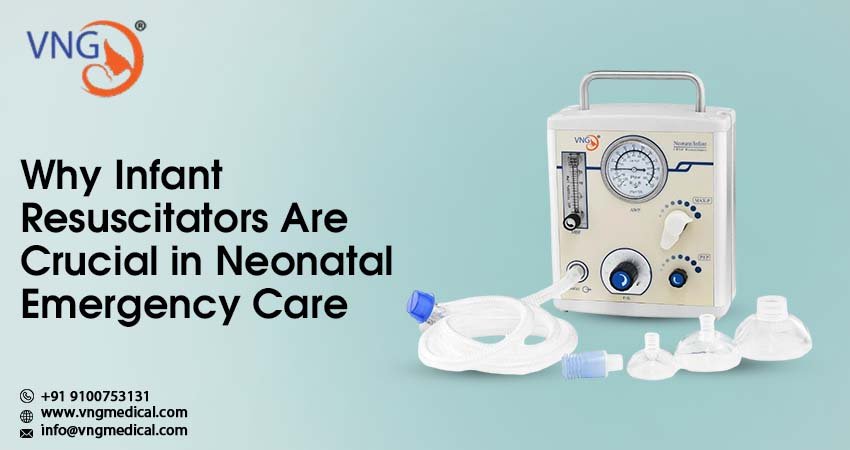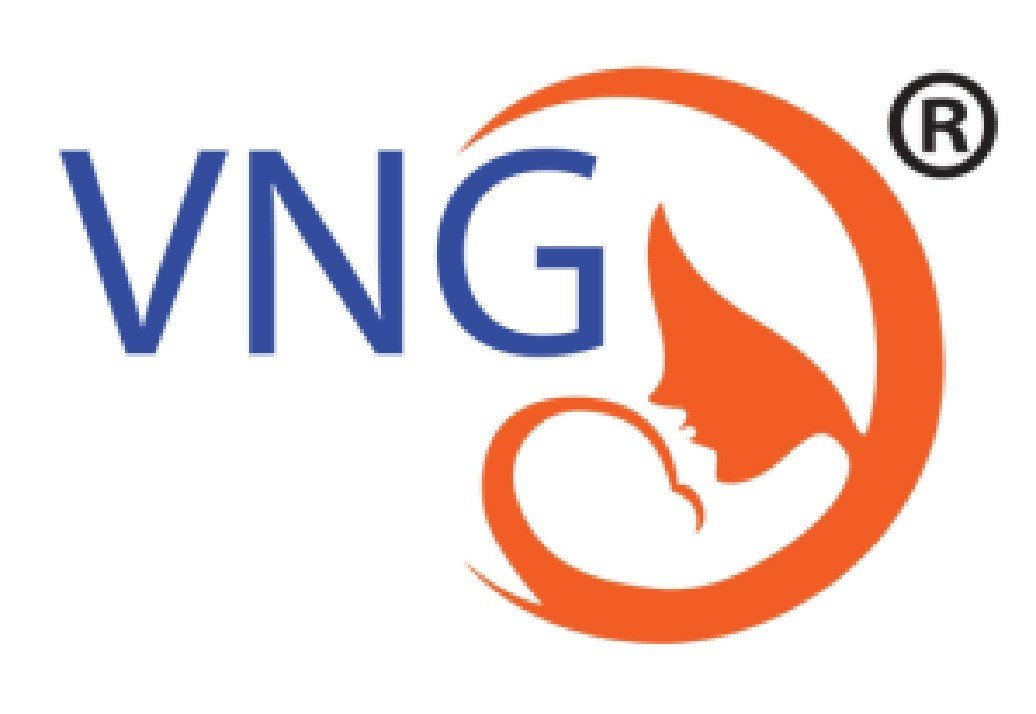In neonatal care, time is the most important factor. Specifically, the time between the encounter with a problem and potential resolution can mean the difference between life and death. A key device in these life or death situations is the Infant resuscitator, a specialized device intended to provide immediate respiratory support to newborns and forms the basis for a newborn’s breathing in emergency situations, such as birth asphyxia or neonatal respiratory distress. In this blog, we will explore what an Infant resuscitator is, how they work & why they are considered one of the core devices of emergency care in neonates.
What Is an Infant Resuscitator?
It is a unique respiratory assistance device that provides temporary, controlled breathing support to neonates in respiratory failure. It uses positive pressure ventilation to inflate the immature or apneic lungs of an infant, often immediately after birth or in a time-critical resuscitation effort.
This device is often found in delivery rooms, NICU’s, baby wards and emergency departments; delivering adequate ventilation to potentially critically ill infants that are hypotonic, lack an adequate drive for respiration, are unconscious and or experiencing apneic moments. This device is designed to operate easily and effectively in a flexible manner but serves a critical role in sensitive times in a newborn’s life.
Respiratory Distress and the Urgent Need for Oxygen
Newborns can have a difficult time breathing on their own because their lungs may not be fully developed. Very common conditions that limit the amount of oxygen babies can exert are Apnea, Neonatal Respiratory Distress Syndrome (RDS) and Lung Disease.
For these reasons, an Infant Resuscitator may be required to provide immediate controlled oxygen and stabilize, until the infant either stabilizes or is able to breathe on their own. The value of using this device is evident in high-risk deliveries and neonatal emergencies when seconds can impose serious limitations.
Functioning of the Infant Resuscitator
The operation of the Infant Resuscitator is inherently simple and flexible, making it easy to work with in high-paced and high-stress situations. Its task is to provide a temporary means of breathing support for those newborns that cannot breathe adequately on their own.
The parts of the resuscitator make it easy to manipulate, which are 2 main components of oxygen levels and flow. The medical/delivery staff can set the oxygen concentration from 21% to 100%, as determined by the clinical situation of the infant and the flow can be adjusted from 5LPM to 15LPM, depending on what’s needed to effectively deliver support in a clinical needing circumstances.
Additionally, the resuscitator weighs a maximum of 10kg, making it suitable for all infants at both the premature and further stages of development. This makes the Infant Resuscitator an adaptable device in any neonatal care area.
Built-In Alarm System for Constant Monitoring
The Infant Resuscitator contains a central integrated alarm system as a critical safety component for the user and infant. The alarm is designed to identify possible complications and improper use or malfunction of the instrument by monitoring differential pressures in a pre-set range. Once differential pressures become unusual, the alarm goes through a sequence of response, the first being a safety valve that will automatically mix the gases when the alarm is engaged to create a controlled mixture of gases.
It is this continual monitoring that allows the safety component to stay focused on the infant’s safety, even in the event of a human error or misuse of the device. The system will respond in good time and minimize the risk of oxygen deprivation and excessive lung pressure at the point of detection.
Easy and Effective Operation
The most significant benefit of Infant Resuscitator is that its performance is not reliant on the operator’s skill, training or attentiveness. This is critical at times of emergency where fast, accurate, and immediate action is essential. Its consistency and reliability makes it easy to use in emergency situations especially in busy maternity wards and neonatal units.
It is reliable and durable making it a product that can function effectively in various healthcare environments without problems. In spite of changing external environments, the unit will continue to function without being affected.
Why Infant Resuscitators Are Crucial in Neonatal Emergency Care
In neonatal emergencies every second counts, and accuracy is key. The Infant Resuscitator fills the gap between surviving and actually dying for infants who are in respiratory failure or distress. A few critical points highlight the importance of the Infant Resuscitator:
• Immediate action: Provides oxygen or life-saving therapy at the time of the emergency.
• Multiple uses: It can be used in hospitals, Neonatal Intensive Care Units (NICUs), delivery rooms as well as nursing homes or cardiopulmonary rehab centres.
• Accurate delivery: The Infant Resuscitator provides consistent output pressure regardless of how skilled (or not) the user is.
• Complete safety measures: It has a built-in alarm system as well as an automatic gas mixture safety valve, which helps to maintain safety in monitoring of your patient.
• Versatility: It provides adjustable oxygen concentration and flow rates to allow the user to provide the best therapy for the infant.
In brief, it is much more than a piece of medical equipment; it is a means of survival for infants all over the world. Overall, the Infant Resuscitator allows health professionals to do their best in a high-pressure threatening situation and leads to improved survival and recovery statistics.
Final Thoughts
The Infant Resuscitator is an essential piece of neonatal emergency medical apparatus. With its compact form factor, safety features and variable operation, it stands out as a device for providing service to babies at risk of birth trauma and neonatal respiratory problems. VNG Medical is a trusted Indian Manufacturer of neonatal medical device approving a wide range of high quality medical products including resuscitation units, incubators and radiant warmers, VNG have been involved in neonatal care products for over 21 years and have been supplying hospitals and institutions in India and overseas. It provides dependable solutions to distributors and biomedical engineers to create dependable solutions for high-risk NICU environments.



